First things first: you gotta stop calling this thing the John Paul Jones guitar. Yes, it is true Jones played it onstage at least once in 1969, but that’s the only thing connecting it to him. It wasn’t made for him, he had no say in the design, he clearly didn’t like it all that much given that he only used it once for part of one show…it just happened to be briefly loaned to Led Zeppelin. And what we can divine about the guitar itself from the few photos we have is FAR more interesting than that brief association. So while we will discuss both, let’s separate the guitar from the player, ok?
We’ll do the boring part first. Back in the day most British bands didn’t bring their own equipment with them to tour the US. I mean, the voltage was different and there was the expense of shipping it across the Atlantic…it was just easier to rent something—or better still, sign an endorsement deal locally. That’s why, for example, The Who were playing US Vox/Thomas equipment when Keith Moon and a rogue stagehand accidentally blew up the Smothers Brothers Show set in 1967.

And so when Led Zeppelin arrived for their first US tour from November 1968 to February 1969, they arranged to hit the road with a backline of Rickenbacker’s new Transonic amps. And even though they brought their favorite guitars with them—you can see Jimmy’s “dragon” Telecaster below—they still got a few backups from Rickenbacker to go along with the amps. Like a 615, a 625, and a 360/12 for Jimmy (none of which ever saw any stage time), and a 4000 and the strange looking bass being played in the picture below for John Paul Jones
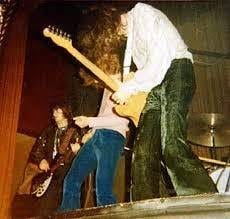
That January 16th, 1969 show is Jones’ only know usage of the guitar—he played it for a couple songs in the middle of the set and then switched back to his main Fender Jazz Bass. At the end of the tour it went back to the Rickenbacker factory, where it resides to this day. And that is just about all we’re gonna say about John Paul Jones in relation to this bass because…that’s about all there is to say!
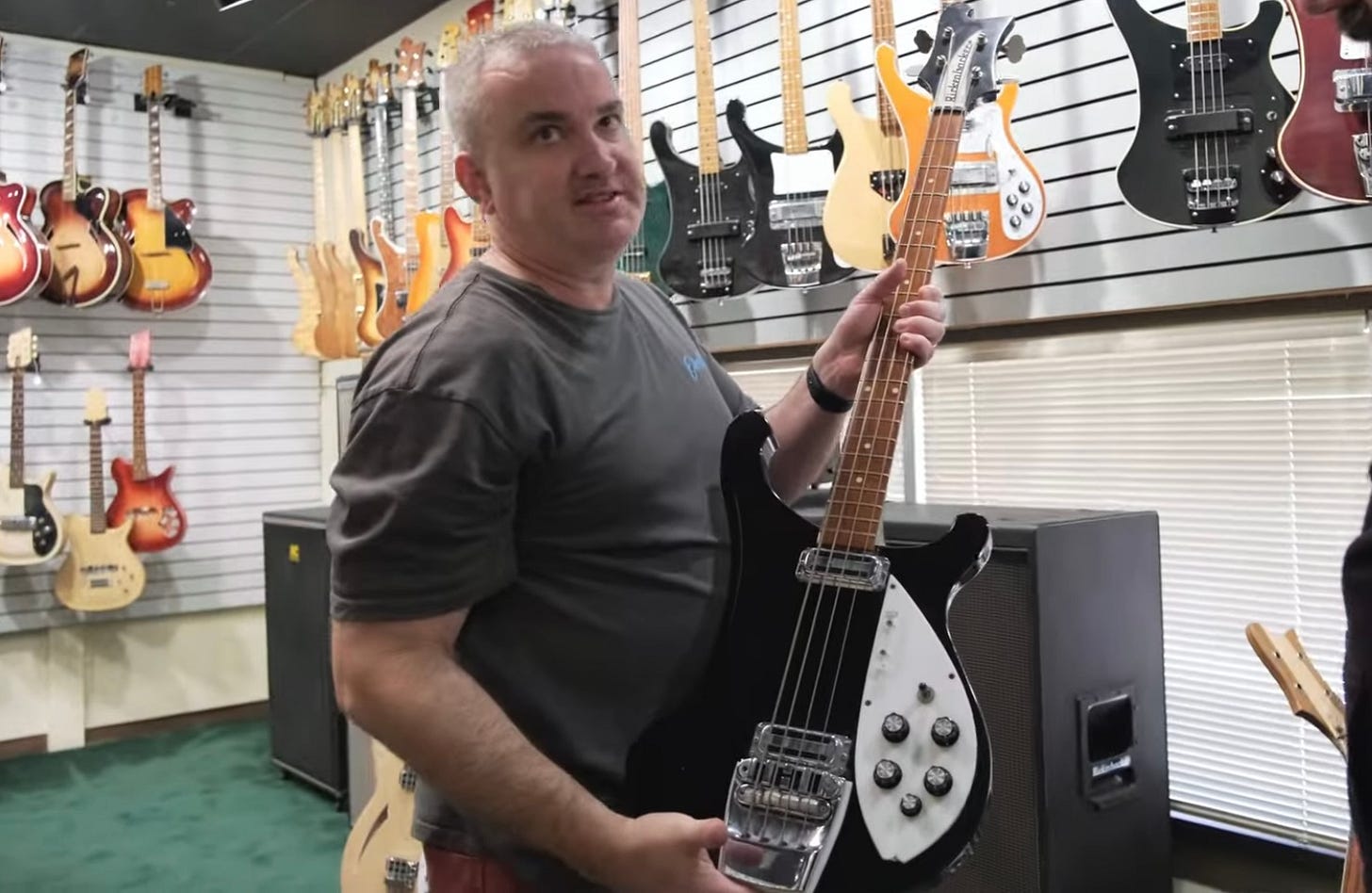
The guitar on the other hand…there’s lots to say about that. So let’s talk about what we can tell from just this photo alone.
This guitar has occasionally been incorrectly called a 4005 prototype because, well, the layout looks a lot like a 4005. Two toaster pickups in the same locations as on a 4005, a teardrop pickguard with a five control layout like a 4005…but all on a 4001S body. One big problem with that theory: it was made in November, 1967, over two years after the 4005 launched. So not a 4005 prototype. It’s also often been referred to as an inspiration for the 4004, which feels like a bit of a stretch but…maybe?
But apart from the layout, this guitar has something in common with the 4005 that NO other 4000 series bass before or since (including the 4004!) has. This one thing is what makes this guitar so interesting. Have you spotted it yet? Look at the bridge and the bridge pickup.
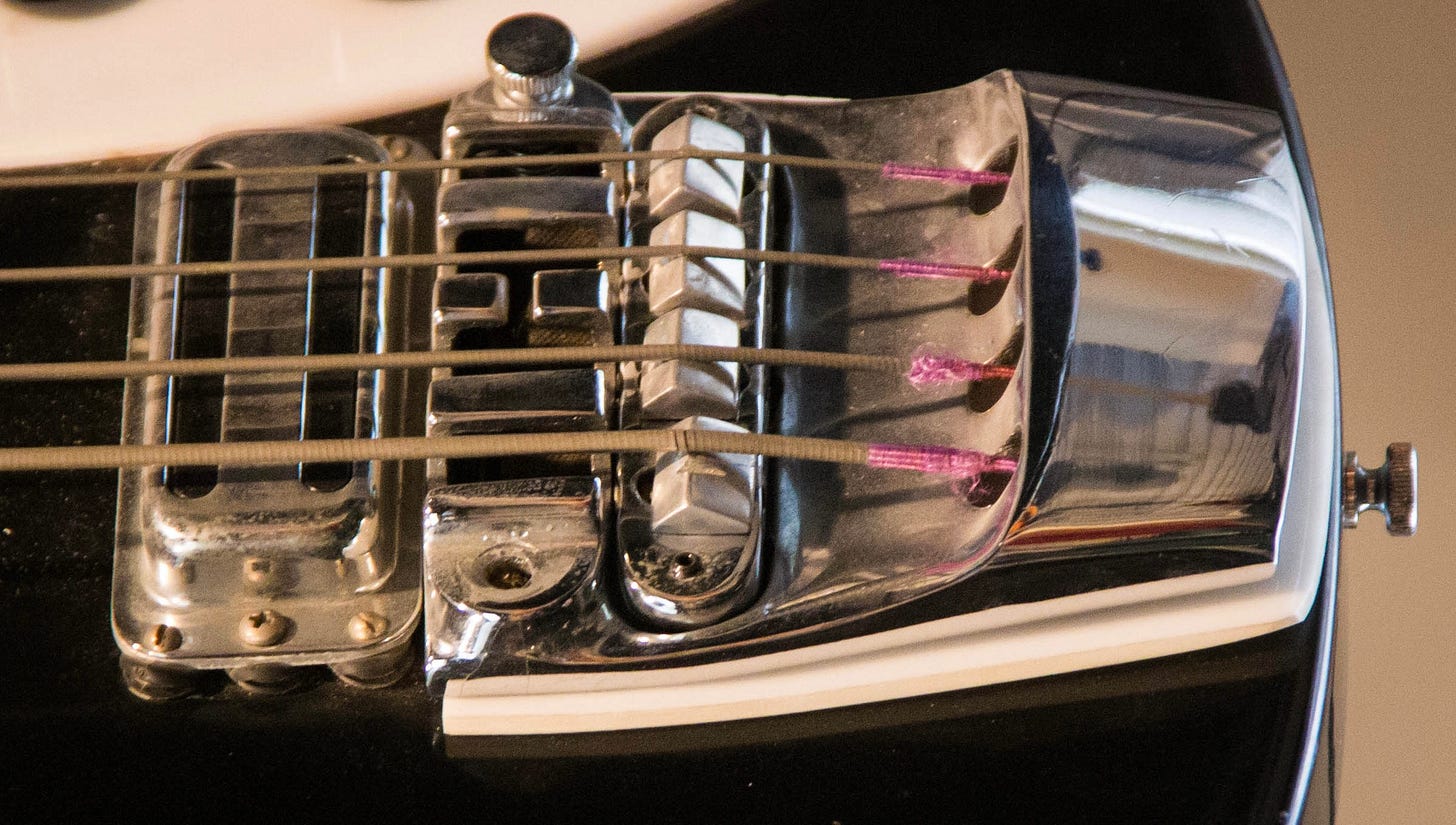
The bridge is sitting on some kind of shim. Why is that? Note also that the pickup is top mounted, not recessed like on every other solidbody 4000 series bass. We’ve got a different deck height here, folks!
Now you should absolutely click the link above to learn all about deck height, but here’s the important bits you need to know. What we mean by deck height is how far from the top of the guitar the strings are. On many solidbody Rickenbacker guitars—the 4001 being a prime example—that height is about 3/8” (about 9.5mm to those of you who don’t use freedom units). On most semihollow guitars—like the 4005—the height is about 3/4” (about 19mm). Got it?
That extra centimeter makes a lot of difference in how you can attach parts to the guitar. On a semihollow guitar, you have enough room below the strings to attach the pickups right to the top. On a solidbody you have to recess them into the body. Here, let’s use two guitars with the same body but different deck heights to clearly show the difference. Here’s a 450 with the 3/8” deck height:
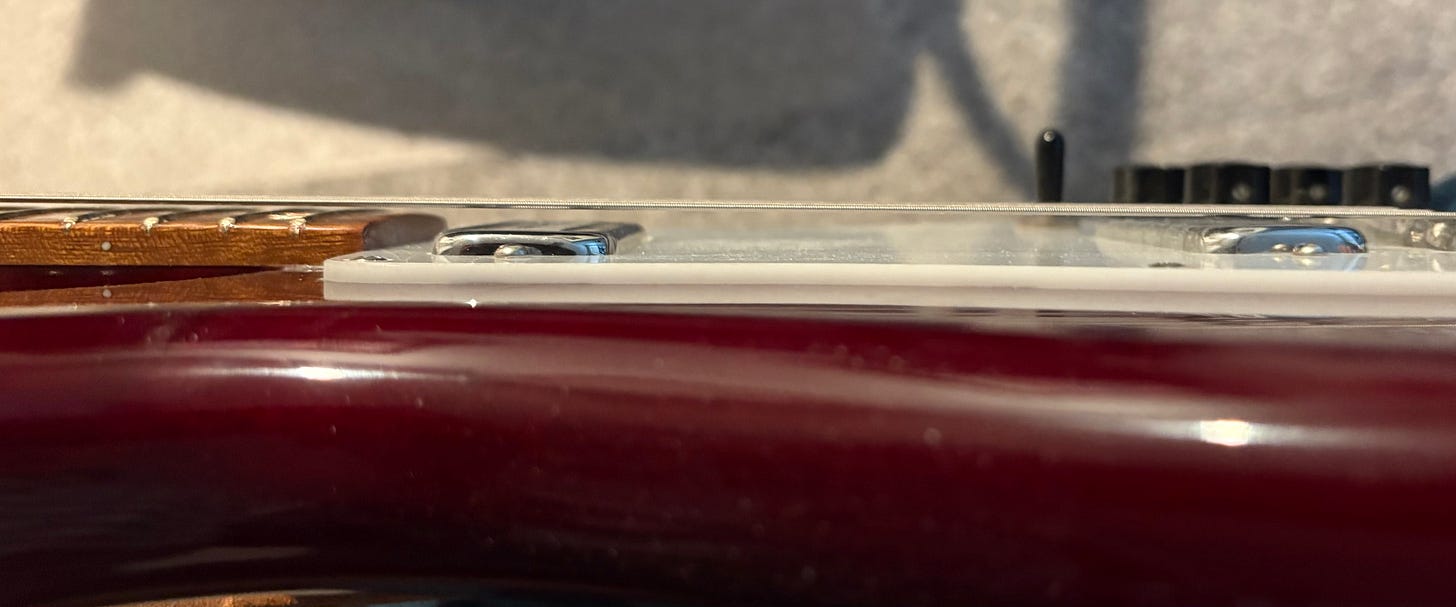
And here’s a 620 with the 3/4” deck height:
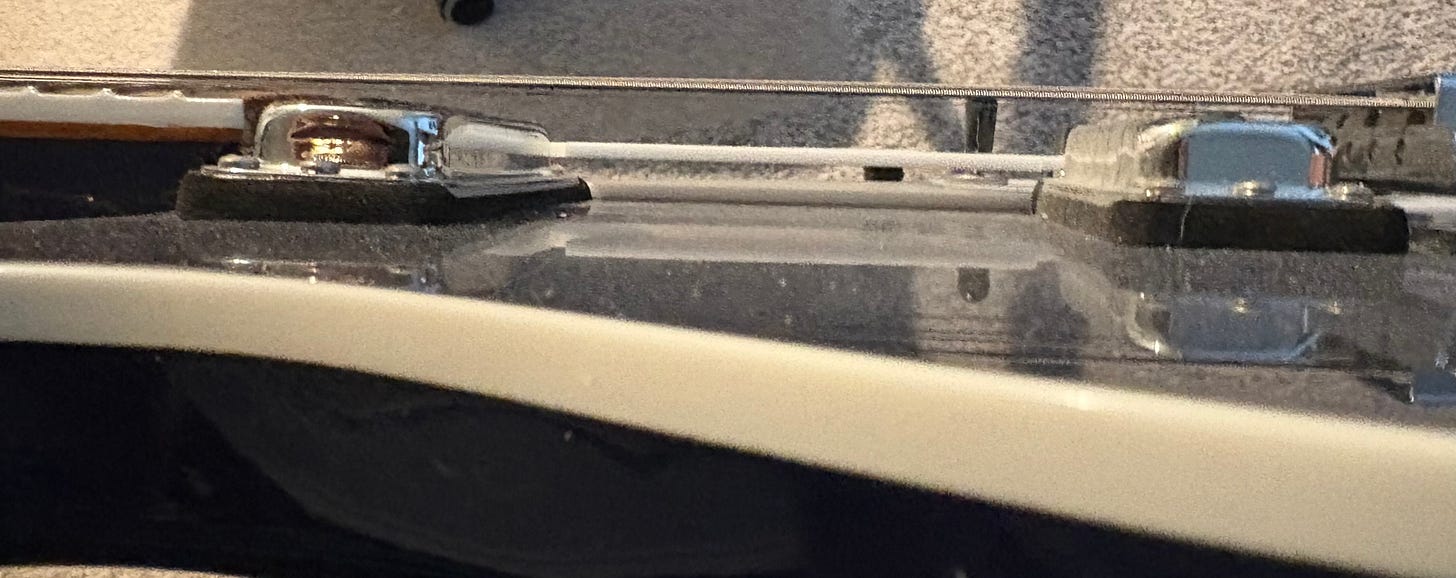
In that context, let’s look at this 4001S again:
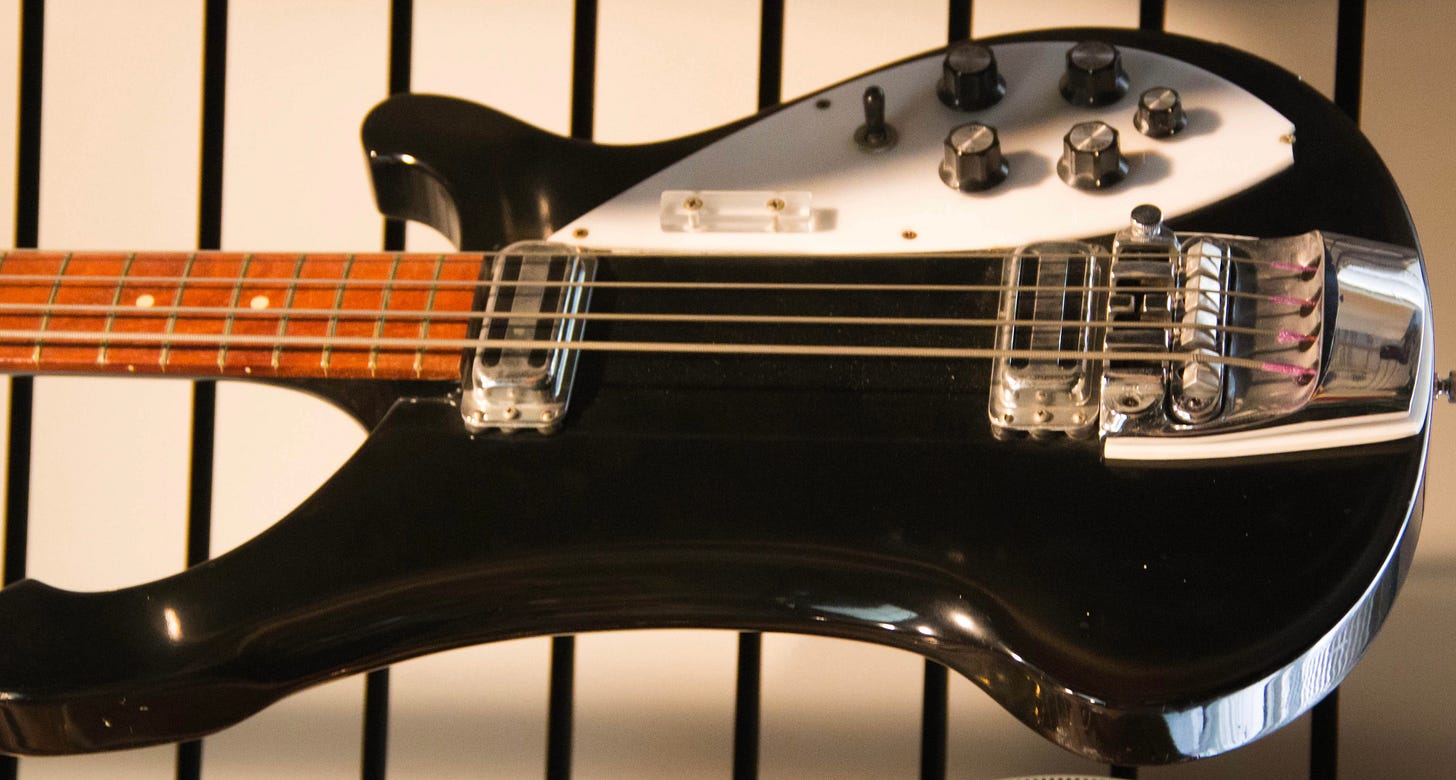
Now we can see why there’s a shim under the bridgeplate AND why the bridge is just about maxed out height-wise—it wouldn’t work without it. The bridge would be too low because it was designed for a 3/8” deck height, not a 3/4”.
And that’s why this guitar is so interesting. It is, to my knowledge, the only solidbody 4000 series bass we’ve ever seen with a 3/4” deck height. That’s cool!
The rest of it—wings, fingerboard, etc appear to be stock 4001S. But there’s some stuff we don’t know. “Why” it exists being chief among them. “Because” is probably the only answer we’ll get! And as I can’t find a good photo of the back, I can’t with 100% certainty say it’s neck-through…but I’m 99% certain it is.
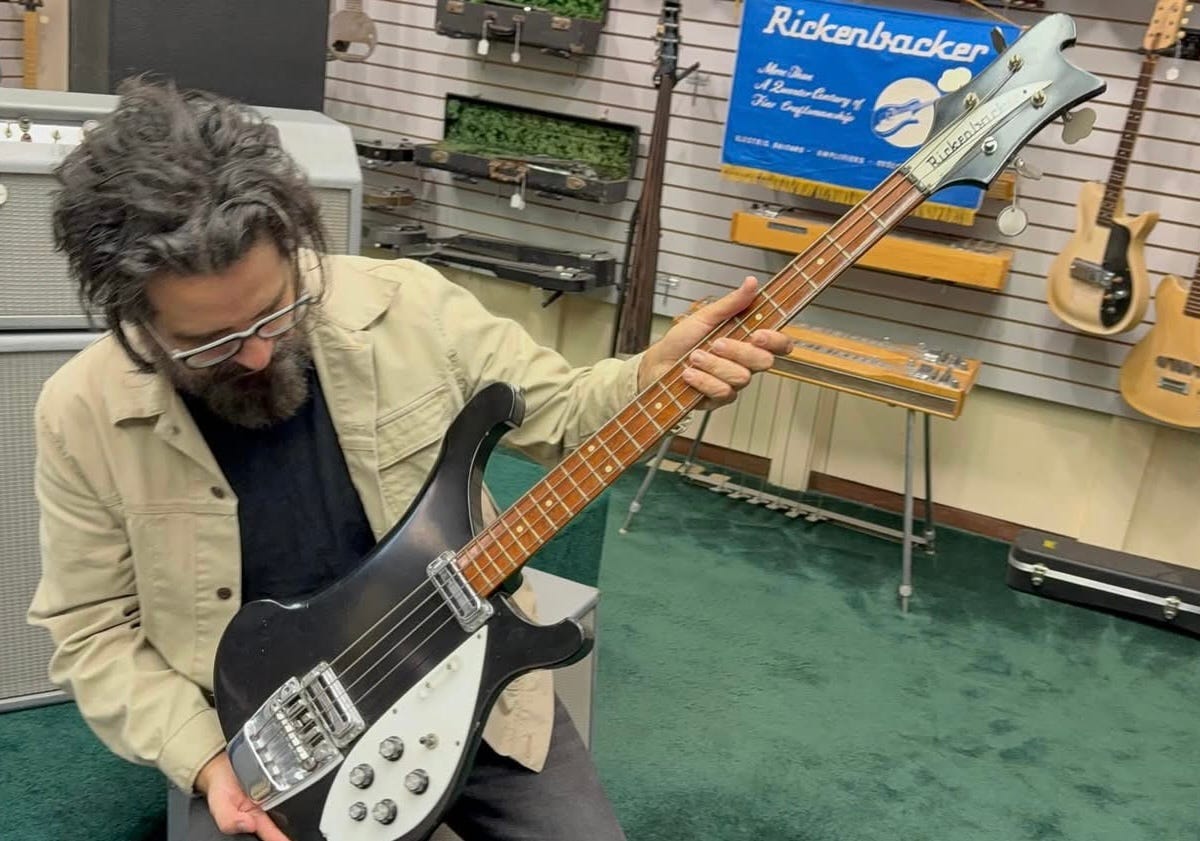
How does it play, how does it sound? I’d wager “fine” and “like a 4005”. If the answer to either of those questions was “great”…there would probably more than one of them out there. Regardless, it’s a very cool bass you should absolutely know about. But for the love of god please stop calling it the John Paul Jones bass!
Want to learn more about…everything else? Check out our handy site map to see what we’ve already covered. Got something you’d like to see covered? Drop it in the comments and we’ll add it to the queue.


Nice job, Andy! As usual, you certainly checked all of the boxes with this backstory.
Well done, and very much appreciated.
Chris